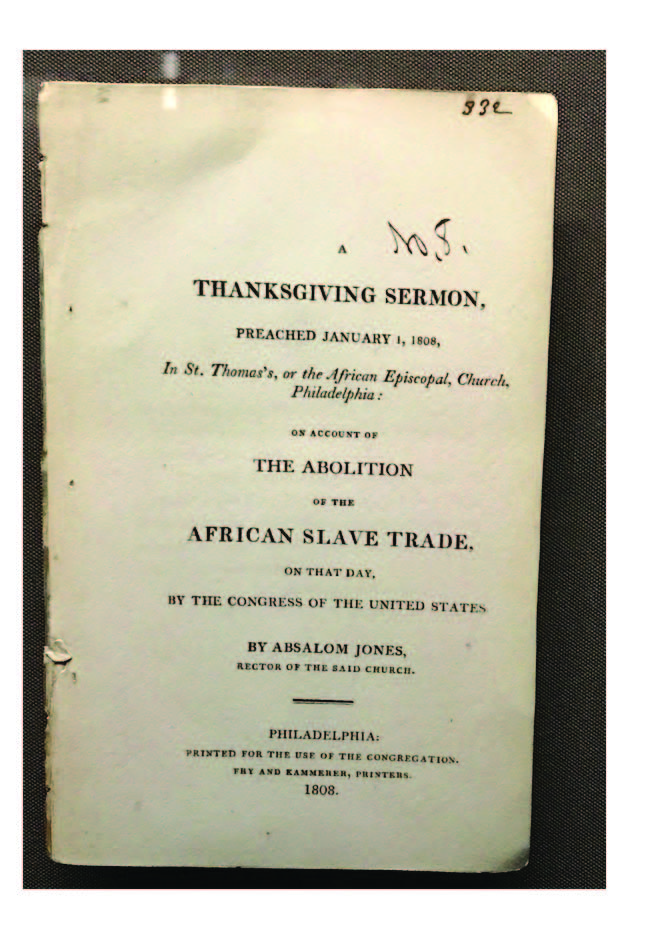Reverend Absalom Jones
Thanksgiving Sermon (1808)...

Quoting this biblical text was the way that the Rev. Absalom Jones began what would become his iconic Thanksgiving Sermon. Delivered almost three score years before President Abraham Lincoln formally designated Thanksgiving Day, this sermon links the story of “the deliverance of the children of Israel from their captivity and bondage in Egypt” to the celebration of the end of the horrific transatlantic slave trade that robbed the African continent of millions of its daughters and sons.
Absalom Jones preached this sermon on January 1, 1808 in the African Episcopal Church of St. Thomas which he described as ‘[t]his comely building, erected chiefly by the generosity of our friends [which] is a monument of God’s goodness to us, and [which] calls for our gratitude with all the other blessings that have been [bestowed on us].” The message is unrelenting and unequivocal in its condemnation of the evil of slavery. It remains a potent proclamation of the power of the living God “to appear in behalf of [the] oppressed ….” For Fr. Absalom Jones the grace of gratitude was central to the on-going struggle for justice. As a testament to its historic significance the Thanksgiving Sermon is part of the permanent Paradox of Liberty exhibit in the Slavery and Freedom gallery at the Smithsonian’s National Museum of African American History and Culture.